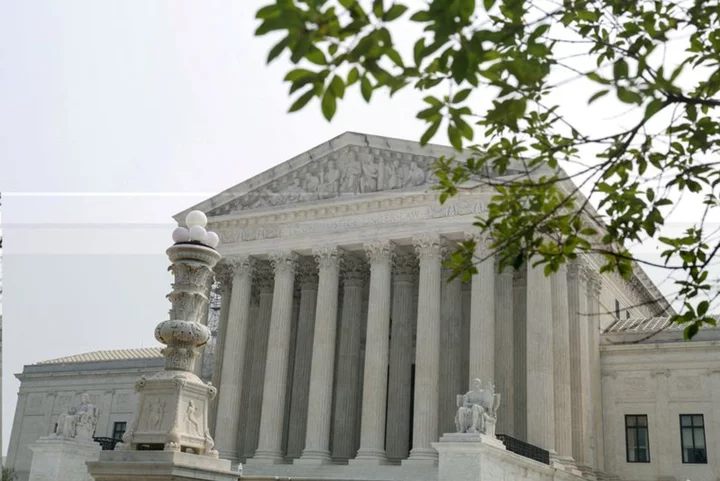By John Kruzel
WASHINGTON (Reuters) -The U.S. Supreme Court on Tuesday denied a request by Alabama officials to halt a lower court's ruling that rejected a Republican-crafted electoral map for diminishing the clout of Black voters, likely clearing the way for a new map to be drawn ahead of the 2024 congressional elections.
The court's action leaves intact a Sept. 5 decision by a federal three-judge panel in Birmingham that the map approved by the state's Republican-led legislature to set the boundaries of Alabama's seven U.S. House of Representatives districts was unlawfully biased against Black voters and must be redrawn.
That map was devised after the Supreme Court in June blocked a previous version, also for weakening the voting power of Black Alabamians.
President Joe Biden's fellow Democrats are seeking to regain control of the House in next year's elections. With Republicans holding a slim 222-212 majority, court battles like this one are helping to shape the fight for control of the chamber.
Black people make up 27% of Alabama's population but are in the majority in only one of the seven House districts as drawn by the state legislature in both the maps it has approved since the 2020 census.
Electoral districts are redrawn each decade to reflect population changes as measured by a national census. In most states, such redistricting is done by the party in power, which can lead to map manipulation for partisan gain. Voting rights litigation that could result in new maps of congressional districts is playing out in several states.
The Supreme Court's 5-4 June ruling affirmed a lower court order requiring state lawmakers to add a second House district with a Black majority - or close to it - in order to comply with the landmark 1965 Voting Rights Act, which prohibits racial discrimination in voting. Black voters tend to favor Democratic candidates.
Following that ruling, the legislature adopted a plan that increased the portion of Black voters in a second House district from around 30% to 40%, still well below a majority. The three-judge panel ruled that this new map failed to remedy the Voting Rights Act violation present in the first map and directed a special master - an independent party appointed by a court - to draw a new, third version of the map ahead of next year's elections.
The latest Republican-drawn map drew swift objections from Black voters and civil rights activists. They said the plan failed to fix the Voting Rights Act violation identified by the Supreme Court, and that it raised concerns under the U.S. Constitution's 14th Amendment guarantee of equal protection under the law.
The Alabama map concentrated large numbers of Black voters into one district and spread others into districts in numbers too small to make up a majority.
The Supreme Court's June ruling was authored by conservative Chief Justice John Roberts and joined in full by the court's three liberals, Sonia Sotomayor, Elena Kagan and Ketanji Brown Jackson. Conservative Justice Brett Kavanaugh joined the judgment in a separate opinion.
Conservative litigants had succeeded in persuading the Supreme Court to limit the Voting Rights Act's scope in some important previous rulings.
The Supreme Court's 2013 ruling in another Alabama case struck down a key part that determined which states with histories of racial discrimination needed federal approval to change voting laws. In a 2021 ruling endorsing Republican-backed Arizona voting restrictions, the justices made it harder to prove violations under a provision of the Voting Rights Act aimed at countering racially biased voting measures.
(Reporting by John Kruzel; Editing by Will Dunham)









